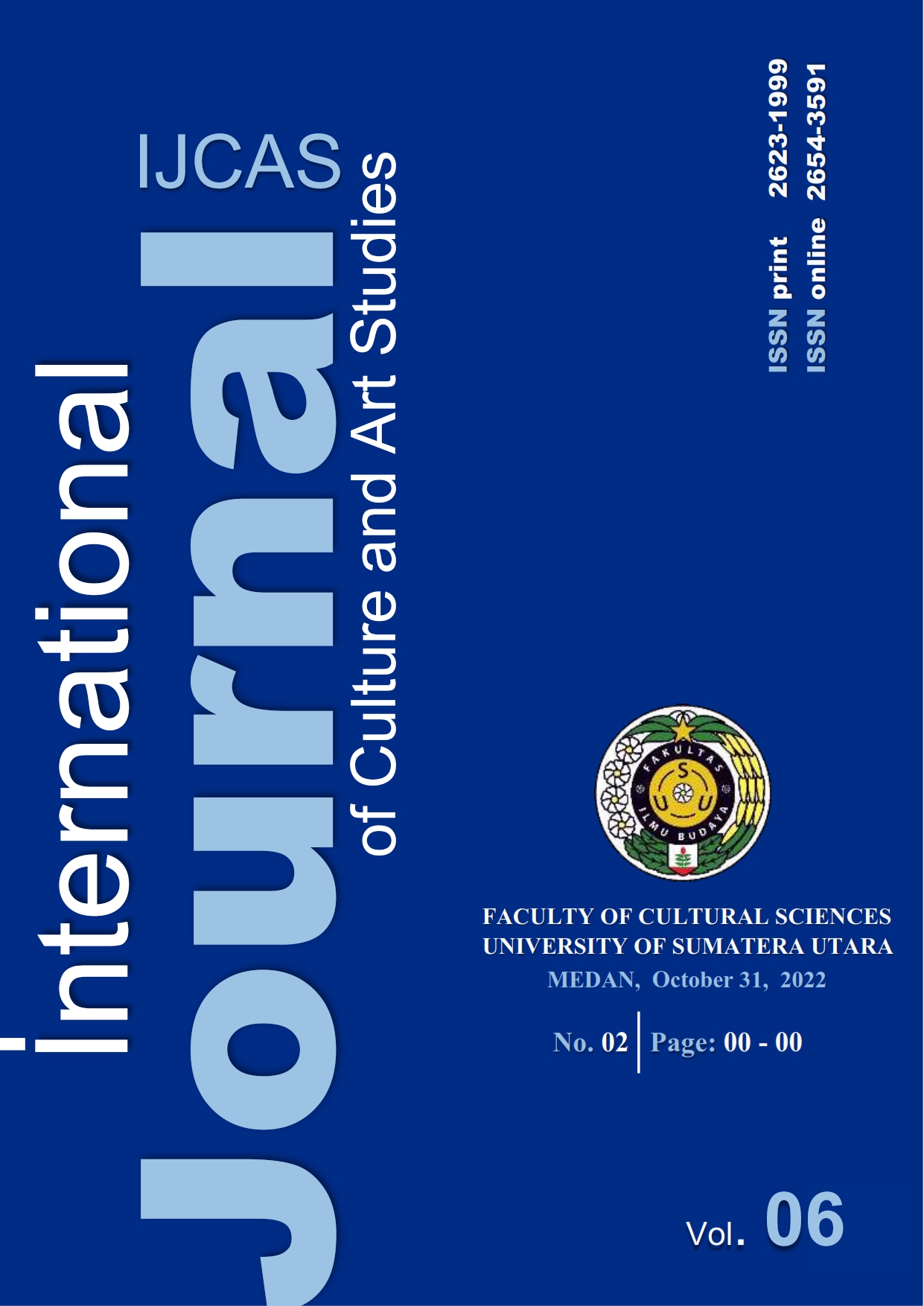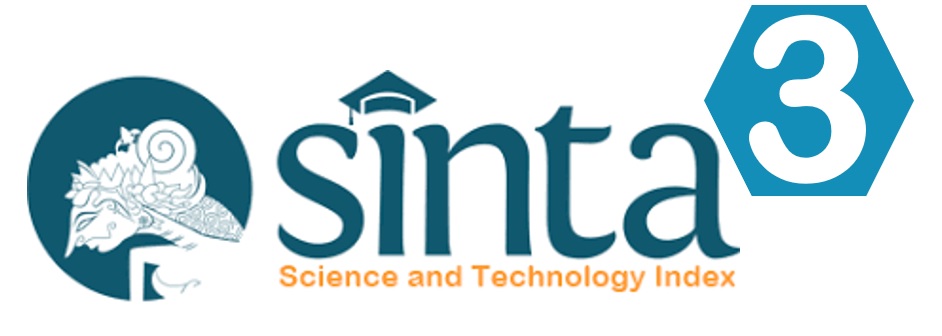Revisiting the Marketing of the Indonesian Batik and the Nigerian Adire
DOI:
https://doi.org/10.32734/ijcas.v6i2.6766Keywords:
Adire, Art-craft, Batik, Creative Economy, Cultural Heritage, Dye Resist, Indonesia, Nigeria, TourismAbstract
This paper aims to fill the gap in the marketing of Batik and Adire. The methodology deployed is a comparative analysis of literature and legal instruments. The paper also uses data to comparatively analyze the impact of the marketing of Batik and Adire in the creative industries in Indonesia and Nigeria. The paper's findings show that both fabrics share some commonalities in making them, and their designs have sociocultural meanings. They contribute to sustainable socio-economic and cultural development of both countries. Moreover, both fabrics have cultural, aesthetic, artistic, and religious values. They play significant roles in tourism, art-craft, the creative industry, and the way of life of Indonesians and Nigerians. Both fabrics require similar measures to enhance their marketing strategies given their marketing limitations. Conclusively, common measures can be used to enhance the marketing of both fabrics in terms of the use of technology. Hence, both countries should put appropriate legal regimes, regulatory frameworks, facilities, and infrastructure in place to achieve that. Also, the creation of textile cottage industries, the establishment of small and medium enterprises, and public-private partnerships are key in bolstering the marketing of Batik and Adire.
Downloads
References
Adekunle, C.P., et al. (2017). Economics of occupational health in resist dyed fabrics (Adire) production in Abeokuta, Ogun State, Nigeria. Conference Proceedings of the 18th Annual National Conference of the Nigerian Association of Agricultural Economists held at Federal University of Agriculture, Abeokuta, Nigeria, 16th – 19th October, 2017, 348.
Adiji, E.B. (2017). Technique and development of modern fabric decoration in Nigeria. International Journal of Development Research, 7(8), 14360.
Adire backpack. Retrieved from https://albania.desertcart.com/products/17153251-jansport-right-packexpressions-blue-indigo-Adire.
Adire footwear. Retrieved from https://www.atwazi.com/products/tricia-yellow-Adire-fabric-black?variant=36561761361.
Adire mask. Retrieved from https://www.menadee.com/product/Adire-face-mask-stl12/.
African designs for jewelry made from fabrics like Adire. Retrieved from https://www.ajokebrownmag.com/tag/ankara/.
Akinbileje, T.Y. (2014). Symbolic values of clothing and textiles art in traditional and contemporary Africa. International Journal of Development and Sustainability, 3(4), 627.
Akinsola, W. (2019). The state of Nigeria’s fashion industry. StearsBusiness. 11 June. Retrieved from https://www.stearsng.com/article/the-state-of-nigerias-fashion-industry.
Alexandri, M.B., et al. (2019). Creative industries: existence of arts traditional industries in Indonesia. Academy of Strategic Management Journal, 18(1), 2.
Amubode, A.A. (2009). Strategies for economically sustainable resist dyeing industries in Abeokuta, Ogun State, Nigeria. (Unpublished Doctoral dissertation) University of Southampton, Faculty of Law, Arts &Social Sciences, Winchester School of Art, August, 62.
Anele, K.K., Lee J. & Cha, E. (2021). A comparative analysis of the making of the Nigerian Adire and the Indonesian Batik and their socioeconomic importance. Journal of Korean Traditional Costume, 24(1), 121–138.
Anele, K.K. (2021). An assessment of sustainable tourism development in North Sumatra. Proceedings of the International Conference on Culture Heritage, Education, Sustainable Tourism, and Innovation Technologies, 214. DOI:10.5220/0010306202070218.
Anele, K.K. (2020a). Addressing the issue of piracy off Indonesia and Nigeria: the need for a paradigm change. The Indonesian Journal of International & Comparative Law, VII, 253–254.
Anele, K.K. (2020b). Piracy off the coast of Indonesia: potential implications on the craft industry. Brawijaya Law Journal, 7(1), 1–2. DOI: http://dx.doi.org/10.21776/ub.blj.2020.007.01.01.
Anele, K.K. (2020c). The potential effects of piracy on the art-craft industry: a comparative analysis of Nigeria and Indonesia. Indonesia Law Review, 10(2), 217–237. DOI: http://dx.doi.org/10.15742/ilreview.v10n2.652.
Anele, K.K. (2018). The status of the Indonesian Batik industry. Emerging Area Research, Policy Report, 60.
Areo, M.O. & Areo A.B. (2016). Ankara kampala: property rights as revamps for the Adire indigenous knowledge. Journal of Law, Policy and Globalization, 26
Areo, M.O. & Omisakin F.W.T. (2016). Old wine in new bottle: analysis of the motifs of Osogbo Batik. International Journal of Textile and Fashion Technology, 6(4), 36.
Bamidele, T. & Ogunduyile, S. (2017). Used imported clothing and indigenous handcrafted textiles consumption in Nigeria. International Journal of Home Economics, 10(2), 200.
Banerjee, D. (2016). Journey of textile designs: a case study of Batik in Java and Santiniketan. (Unpublished Master Thesis) Asian Studies, Universiteit Leiden, 1 September. Retrieved from https://openaccess.leidenuniv.nl/bitstream/handle/1887/43465/Master%20Thesis_Deboshree%20Banerjee.pdf?sequence=1.
Batik mask. Retrieved from https://www.staysafeamsterdam.nl/.
Batik sandals. Retrieved from https://www.tradekorea.com/product/detail/P406241/Leather-Sandals-withBatik-Painted.html.
Batik shoulder bag. Retrieved from https://wgBatik.com/products/traditional-Batik-java.
Batik textile necklace. Retrieved from https://rothlu.ie/products/loretteen-textile-necklace.
Bekraf. (2019). Creative Economy Outlook 2019 (OPUS Indonesia). Creative Economy Agency, Republic of Indonesia, 15.
Braide, O.O. (2016). Stylistic features of contemporary Adire in Nigerian textile practice. Journal of Humanities, Social Sciences and Creative Arts, 11(1 & 2), 109.
Close up hand and canting, making Batik tulis Indonesia. Fashion, artist. Retrieved from https://www.dreamstime.com/solo-indonesia-june-close-up-hand-canting-making-Batik-tulisindonesia-canting-tool-drawing-texture-fabric-image185092444.
Creative sector: skill gap report 2021. (2021). Jobberman Nigeria. Retrieved from https://www.researchgate.net/publication/351130187_Creative_Sector_Skills_Gap_Report_Creative_Sector_Skills_Gap_Report.
Dora, P.E. & Poetiray, M.S. The role of basic design course in the introduction and development of local culture values. Retrieved from http://repository.petra.ac.id/15247/2/icce_final.pdf.
Eleboda, S.S. & Abiala, A.F. (2020). Consumer ethnocentrism-induced perception and the patronage of Adire fabrics among female undergraduates in Ogun State. International Journal of Business and Management Invention, 9(7).
Financing opportunities in Indonesia’s creative industry. (2018). Final Report Ipsos Business Consulting, April, 10.
Indonesian Batik: a cultural beauty. (2008). Trade Research & Development Agency (TREDA), Ministry of Trade of the Republic of Indonesia, 3.
Indonesian Investment Law No. 25/2007.
Indonesian Presidential Regulation No 6 of 2015.
Kartika, C.S.D., et al. (2019). Atlas of Indonesian Batik: Javanese Batikâ€, Proceedings of the 29th International Cartographic Conference (ICC), 15–20 July, Tokyo, Japan. https://doi.org/10.5194/ica-proc-2-59-2019, 2.
KashimI, B., et al. (2012). The impact of cottage textile industries on students’ of textile designs in tertiary institutions in South Western Nigeria. Education Research Journal, 2(3), 81–82.
Kurniati, E.D. & Prajanti, S.D.W. (2018). Batik SMEs efficiency and entrepreneurship role in innovation. Journal of Economics and Policy, 11(2), 376. DOI: https:doi.org/10.15294/jejak.v11i2.16058.
Law of the Republic of Indonesia No. 10 of 2009 Concerning Tourism.
Meilach, D.Z. (1973). Contemporary Batik and tie-dye. London: George Allen & Unwin Ltd., 3.
Muhammad M., et al. (2018). Nigerian textile industry: evidence of policy neglect. SARJANA, 33(1), 42–52.
Nigerian Export Promotion Council Act 2004.
Nigerian Investment Promotion Commission Act, Cap N17, Laws of the Federation of Nigeria, 2004.
Nigerian Tourism Development Corporation Act, Cap N137, Laws of the Federation of Nigeria, 2004.
Nuryakin, M. (2018). Competitive advantage and product innovation: key success of Batik SMEs marketing performance in Indonesia. Academy of Strategic Management Journal, 17(2).
Nyekwere, E.O. et al. (2014). An assessment of the use of social media as advertising vehicles in Nigeria: a study of Facebook and Twitter. New Media and Mass Communication, 21.
Okpala K. E., et al. (2019). Producers’ make or buy decision and business shutdown: an evaluation of choice in textile industry. Cogent Business & Management, 6(1). DOI:10.1080/23311975.2019.1632568.
Osinowo, A.A. (1996). Production and utilization of resist dyeing techniques in Abeokuta. Vas Journal, 5(1), 41.
Owoeye O.I.O. (2017). Textile, texts and symbols: women dyers and symbols in the indigo textile dyeing production process in Osogbo, Nigeria. (Unpublished DPhil. Dissertation) University of Pretoria, 84–86.
Oyeniyi, B.A. (2013). Poverty alleviation and empowerment of small-scale industries in Nigeria: the case of Tie and Dye Makers Association. African Journal of History and Culture, 5(6).
Presidential Decree No. 33 of 2009 on National Batik Day.
Sulistianingsih, D. P. (2018). The protection of Indonesian Batik products in economic globalization. 1st International Conference on Indonesian Legal Studies, 2018.
Rahmah, M. (2016). The protection of “Batik†craft under geographical indication: the strategy for developing creative industry in Indonesia. WIPO-WATO Colloquium Papers, 2016.
Regulation of the Minister of Tourism of the Republic of Indonesia No. 14 of 2016 on Guidelines for Sustainable Tourism Destination.
Regulation of Minister of Education and Culture No. 8 of 2020.
Renne, E.P. (2020). Reinterpreting Adire cloth in Northern Nigeria. Textile History, 3. DOI:10.1080/00404969.2020.1747372.
Rogak, S.N. et al. Properties of materials considered for improvised masks. Retrieved from https://arxiv.org/pdf/2008.06001.pdf.
Saheed, Z.S. (2013). Adira textile: a cultural heritage and entrepreneurial craft in Egbaland, Nigeria. International Journal of Small Business and Entrepreneurship Research, 1(1), 17.
Shaharuddin, S.I. et al. (2021). A review on the Malaysian and Indonesian Batik production, challenges, and innovations in the 21st century. Sage Open. DOI:10.1177/21582440211040128.
Solomon, G. & Ezra, A. (2015). Tie-Dye (Adire) among the Jukun people. Journal of African Studies, 4, 1–13.
Steelyana, E. (2012). Batik, a beautiful cultural heritage that preserve culture and support economic development in Indonesia. Binus Business Review, 3(1), 118.
Sulistianingsih D. & Pujiono. (2018). The protection of Indonesian Batik products in economic globalization. Advances in Social Science, Education and Humanities Research, 198.
Suparno, et al. (2019). The determinant factors of development Batik cluster business: lesson from Pekalongan, Indonesia. Journal of Asian Finance, Economics and Business, 6(4), 228. DOI:10.13106/jafeb.2019.vol6.no4.227.
Tso, R.V. & Cowling, B.J. (2020). Importance of face masks for COVID-19: a call for effective public education. Clinical Infectious Disease, 1–4. DOI:10.1093/cid/ciaa593, XX(XX).
Wibowo J., et al. (2016). East Java traditional Batik marketing model for the development of management information system as efforts to preserve the nation’s culture. International Journal of Business and Management Invention, 5(11).
World Health Organisation (WHO). (2020). Advice on the use of masks in the context of COVID-19. Interim Guidance, 5 June.
World Health Organisation (WHO). Guidance on Homemade Cloth Mask. Retrieved from https://www.afro.who.int/sites/default/files/2020-06/Guidance%20on%20Homemade%20Masks%20-AFRO-ENG.pdf.
Downloads
Published
How to Cite
Issue
Section
License
Copyright (c) 2022 Kalu Kingsley Anele, Young-Rae Cho

This work is licensed under a Creative Commons Attribution-ShareAlike 4.0 International License.













